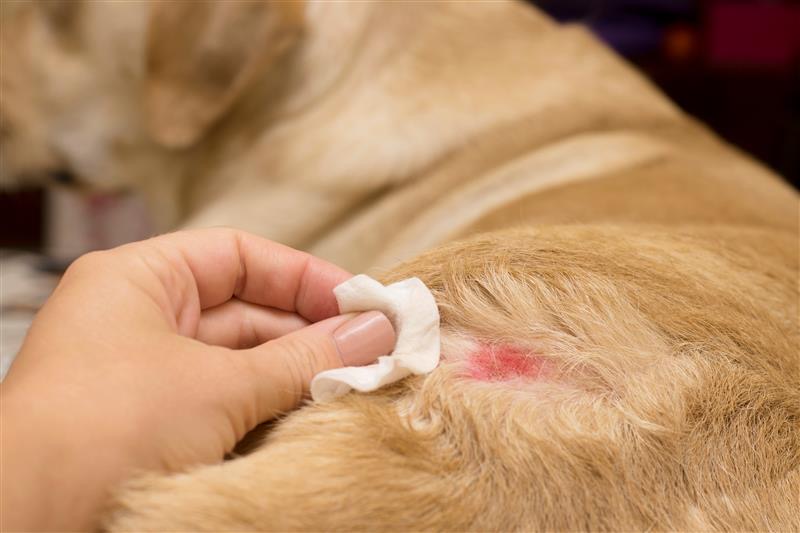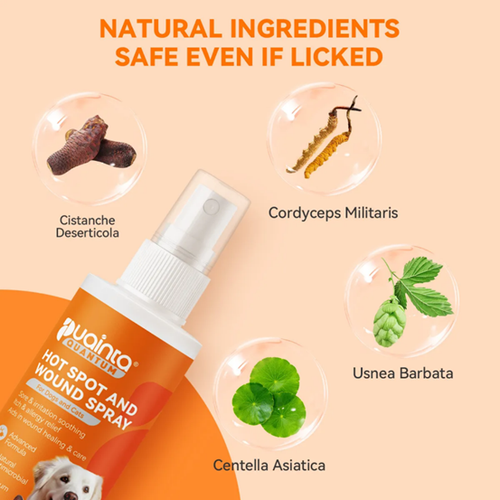7 Common Skin Conditions in Dogs 2023.3.3

Since the pandemic happened, there has been a dramatic increase in the number of people who are enticed to get a pet. Though owning one can be a rewarding experience, it isn’t just about going to a Maltese Shih Tzu for sale or Labrador Retriever for adoption but caring and loving our pet dogs requires much more. Being a responsible fur parent means looking after our companions’ health and one of them being skin conditions. While humans are acutely aware of the skin conditions that we may suffer from, we’re not the only animals who struggle with itches, rashes, and acne. Dogs in particular are also susceptible to a number of skin conditions, many of which require lifelong treatment.
If you’ve noticed your dog licking, scratching or munching on a part of their body repeatedly, they may be suffering from one of the following common skin conditions in dogs. Some institutions offer online puppy training that could be useful for some conditions but you still need to watch out for any redness, hair loss, or lumps and bumps, as they may be symptoms of an underlying medical condition.
7 Common Skin Conditions in Dogs
Atopic Dermatitis
Atopic dermatitis in dogs, also known as canine atopy, is a common skin condition caused by an allergic reaction to environmental allergens. It is a type of environmental hypersensitivity, which means that the dog’s immune system overreacts to things like pollen, dust mites, mould spores and other irritants in the environment. These allergens can cause intense itching, redness and inflammation of the skin. This can result in severe discomfort for the dog and often leads to secondary infections and hair loss.
The signs of atopic dermatitis in dogs vary depending on the severity of the condition but typically include intense itching, redness and inflammation of the skin . Dogs may scratch or lick excessively at their coat and may show signs of hair loss due to excessive grooming or scratching. In more severe cases, they may develop scabs and lesions that are often painful and uncomfortable.
Atopic dermatitis is diagnosed through a combination of physical examination, blood tests and allergy testing. Treatment options vary depending on the severity of the condition, but typically involve managing exposure to environmental allergens as well as using medications such as antihistamines or corticosteroids to reduce inflammation and itchiness.
Hot Spots
The most common symptom of a hot spot is intense itching which leads to excessive licking and chewing at the affected area resulting in further irritation and inflammation. This creates a vicious cycle where the more the dog licks and chews at the affected area, the worse the hot spot becomes until eventually it becomes infected with bacteria, leading to a nasty smelling discharge. Other signs include redness of the skin around the affected area, hair loss around the spot (often seen in circular patterns) and swelling or crusting of the skin due to pus formation from bacterial infection.
Hot spots can be painful and uncomfortable for dogs, so it’s important to seek medical attention as soon as possible. Treatment typically includes antibiotics, anti-inflammatory medications and topical creams.
Yeast Infection
Yeast infections in dogs are caused by an overgrowth of the fungus Malassezia pachydermatis. This type of infection is most commonly found in skin folds on the body, such as between the toes, around the eyes and within the ears. The symptoms may vary depending on the location of the infection. Common symptoms include redness and itchiness of the affected area, a foul odour and hair loss. In some cases, secondary bacterial infections can occur due to excessive scratching caused by itching.
Treating a yeast infection includes identifying any underlying causes and eliminating them from your pet’s environment if possible. Medicated shampoos with antifungal properties can be used for topical treatment of infected areas. Oral antifungal medications may also be prescribed by your veterinarian depending on severity of the infection. In addition, dietary changes may be recommended.
Ringworm
Ringworm is a fungal infection that can affect the skin, hair, and nails of dogs. It is characterised by circular patches of hair loss and red, scaly skin. It is caused by a variety of fungi called dermatophytes which are found in soil, on animals, and even on humans.
Treatment options include topical antifungal creams or ointments that are applied directly to the affected area as well as oral medications. In severe cases, your veterinarian may advise shaving off all of your dog’s hair to allow for easier application of topical treatments and reduce the risk for spreading ringworm spores to other pets or humans in your household.
Seborrhea
Seborrhea or seborrheic dermatitis is a skin condition characterised by an overproduction of sebum, an oily substance that can lead to dry, itchy skin. The first signs of Seborrhea are usually seen on the ears and muzzle, where the skin becomes greasy and scales appear. It may spread to other parts of the body such as the chest, legs, abdomen or back. The scales are usually white or yellowish in colour, and may be accompanied by patches of hair loss. In addition to scaling, dogs with seborrhea may also have an unpleasant odour due to the accumulation of oils on their skin.
Treatment may include shampooing with medicated shampoos designed for seborrheic dermatitis, using topical ointments containing corticosteroids or antifungal agents, supplementing fatty acids in the diet to reduce inflammation and improve skin health or using oral medication prescribed by your veterinarian.
Mange
Mange is a skin disorder caused by mites that can affect dogs and other animals. The most common type of mange in dogs is called sarcoptic mange, which is caused by the Sarcoptes scabiei mite. This microscopic mite burrows into the skin and causes intense itching, hair loss, redness and inflammation.
The most common symptom of mange is excessive itching and scratching. The dog will often scratch or bite at its skin in an attempt to relieve the intense itching sensation caused by the burrowing mites. In some cases, mange may also cause hair loss due to the dog’s constant scratching or biting at its own skin. The affected areas of skin may become inflamed, red, crusty or scaly due to the irritation caused by the mites.
Treatment for mange involves topical treatments such as medicated shampoos along with oral medications such as antiparasitic drugs. In severe cases where there is widespread hair loss or secondary bacterial infections present, antibiotics may also be prescribed.
Cushing’s Disease
Cushing’s disease is a hormonal imbalance that can affect the skin of dogs. It is caused by an overproduction of cortisol, a hormone produced by the adrenal glands. Dogs with Cushing’s disease will often have thinning hair, dry skin, and reddened or darkened patches on the skin. They will also be prone to infections and may develop a pot bellied appearance.
If left untreated, Cushing’s Disease can lead to serious health problems such as diabetes mellitus, high blood pressure, heart disease and liver failure. Treatment options for Cushing’s Disease depend on the underlying cause. In some cases, surgery may be recommended to remove the tumour from the adrenal gland. Medications may be prescribed to control the amount of cortisol being produced by the body.
Conclusion
It is important for owners to stay vigilant when it comes to their pets’ health – be aware of how much your dog tends to scratch or itch, and make note of any big changes in their behaviour. Doing this will help you stay on top of your dog’s condition, and can potentially save your dog a lot of stress and anxiety if you can get them treatment early.






















